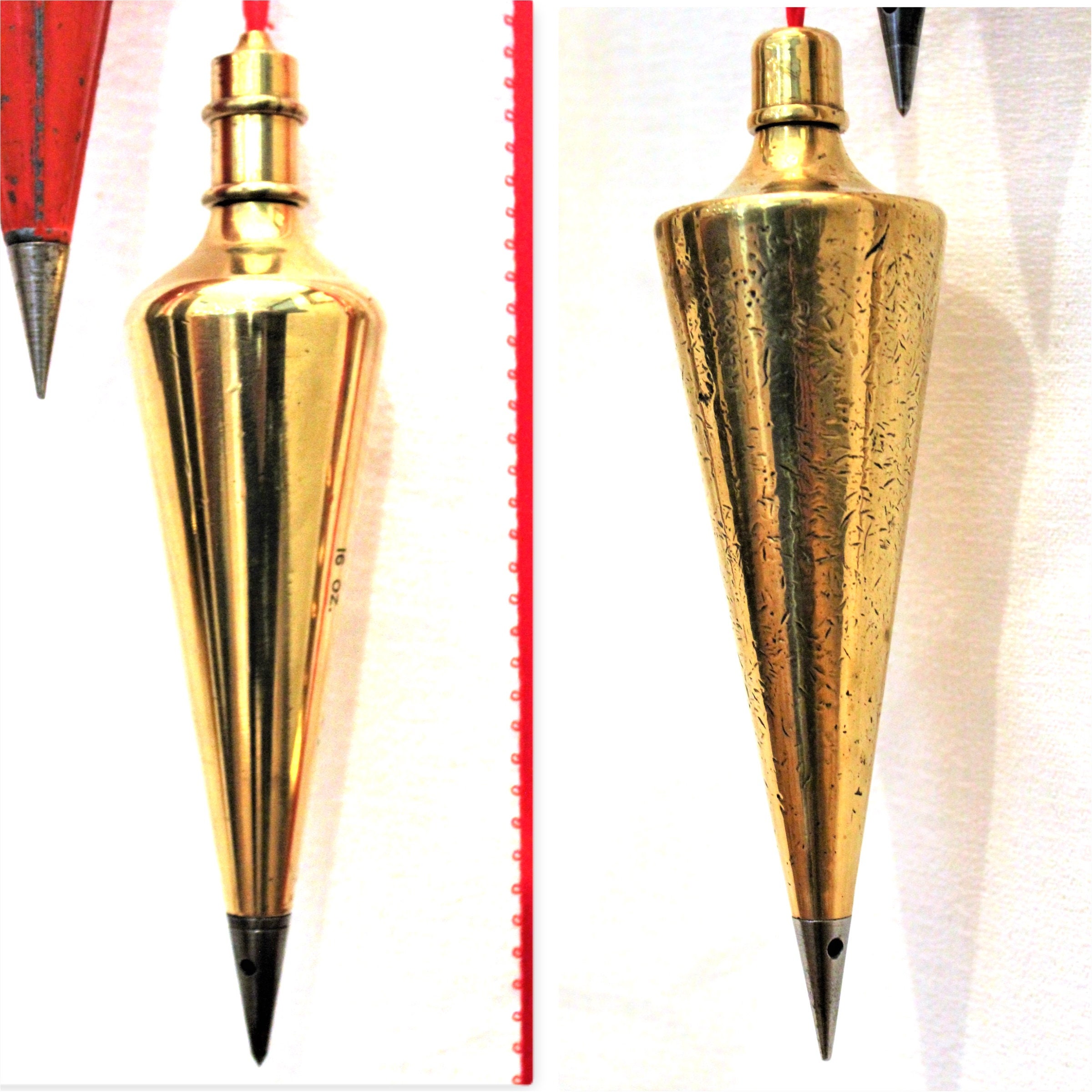

As you know every heavy piece of metal can be used as a plumb bob when you fix it to a line. In this group we find a lot of interesting constructions/combinations. 1 For more information see my newsletters WOODEN PBs, MAKING MINIATURE PBs, ARTISTS AND PBs and PRODUCTION OF PBs They will not spend much money for a plumb bob. People who are looking what piece in their garage or tool box could be used as a plumb bob. This group is producing plumb bobs just for fun: They do not earn money, when you count all the time for preparing and making these beauties. 1 People who have a lathe and turn plumb bobs from metal (mostly BRASS) or wood, mostly hardwood (see LISTING ON PAGE 79). A lot of plumb bobs are HOME MADE by the worker who wants to use the tool for his work. Not all plumb bobs are produced in big or small factories by professionals. INTRODUCTION TURNED FROM WOOD TURNED FROM BRASS MODIFIED TOOLS OR PIECES OTHER PIECES ARTIST SOMETHING TO SMILE ABOUT REMARKS INTRODUCTION This newsletter is the answer to an idea of two Fellow Collectors, who asked me to write about home made plumb bobs. Thank you, looking forward to hearing from you Wolf HOME MADE PLUMB BOBS TABLE OF CONTENTS 1. If you have any information or pictures for these themes, please let me know. That said, I just pulled the optic in preparation of bedding this action, so I'll get to do it all again.1 Author: Wolf Ruecker WOLF S PLUMB BOB NEWS 2013 Issue 07 JHOME MADE PLUMB BOBS Dear Fellow Collector, Dear reader of the PLUMB BOB NEWS, Please, as always I am in search of new photos, catalogs, articles or personal stories about any aspect of PLUMB BOBS from you. I imagine it could really throw a wrench in things if the action is not drilled/tapped accurately as it would offset your optic with respect to the bore. With my Winchester M70 I made the bold assumption the action ought to true-ish and used the bottom half of the rings to level the scope/action.
Plumb bob tricks verification#
I should do some verification for science! Interesting point in all this, the bubble level in the Spuhr mount seems to be right around ~.5 deg off true when the rifle/optic are on. Level surface (check), level rifle (check). On my KRG SOTIC w/ Spuhr mount, I started much the same. On my AR-15s, I simply set them on a surface I've verified level (regular old hardware store level), set a level on top of the rifle to verify it's level, mount the rings and check those as well. Anyhow, I leveled the action thusly for different setups: I've never attempted to account for body position induced cant.so, there's something to take away. One of my rifles has Steiner T rings with built in level.so you have to make sure to torque them to level during the had the "advantage" of not knowing any of this, or having done much reading on it, when I mounted my optics.

If you have a scope-level just include it in the process.

Will check that out as well.ĮTA: Sort of a crappy pic at a weird angle, but you get the idea. also like the idea of leveling to my position. Once confirmed, tighten rings rest of the way. Put level on top turrent, it should also be level. Once everything is aligned start to tourque down in small increments from screw to screw until snug enough that the scope doesnt move. This allows the greatest "surface area" when aligning the reticle to the plumb bob. You will also want the reticle to shine as large as possible while remaining crisp on the wall. Of course mucking with stuff during the process you tend to knock out of level so check level throughout the process. Use a plumb bob hanging from a nail with white paper taped to wall to increase visibility.Īlso, you still want a small level to first check that your platform is level, then to ensure the receiver is also level. I use the flashlight method with all my rifles. I vote for a mounted scope level, and I find the flashlight method makes installing it an easy 1-man job. For that you can use a scope mounted permanent level, only shoot targets with level lines or plumb bobs (I’m joking here), use the horizon, trust your gut feelings, etc. This goes for the zeroing job as well as when you shoot it after that. What’s sometimes being left off is that you really need to have a way of keeping that reticle level after you tighten the rings. Or you can use a flashlight projecting the reticle onto a plumb line drawn on the wall. Either way has pros and cons.Ĭriteria #2 can be met looking through the scope at a plumb line, plumb bob, etc. Or you can level the rifle via the receiver, flat top rail, etc.


 0 kommentar(er)
0 kommentar(er)
